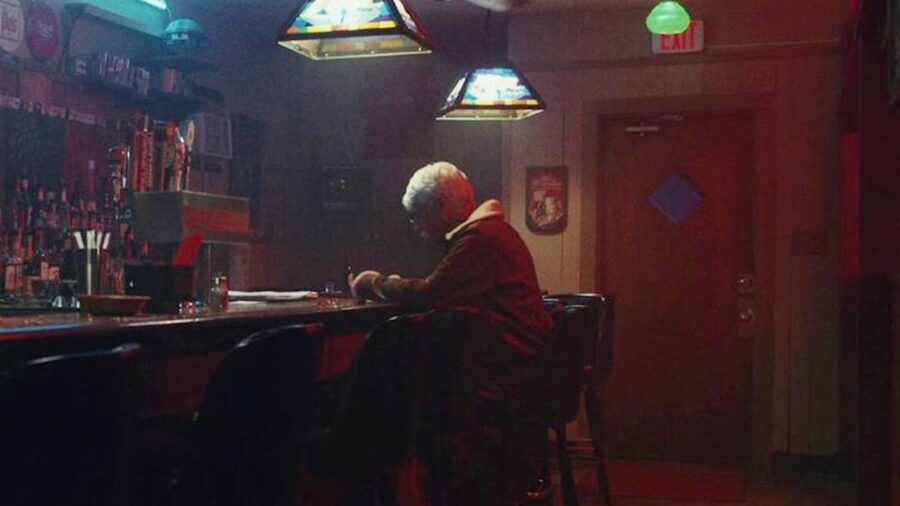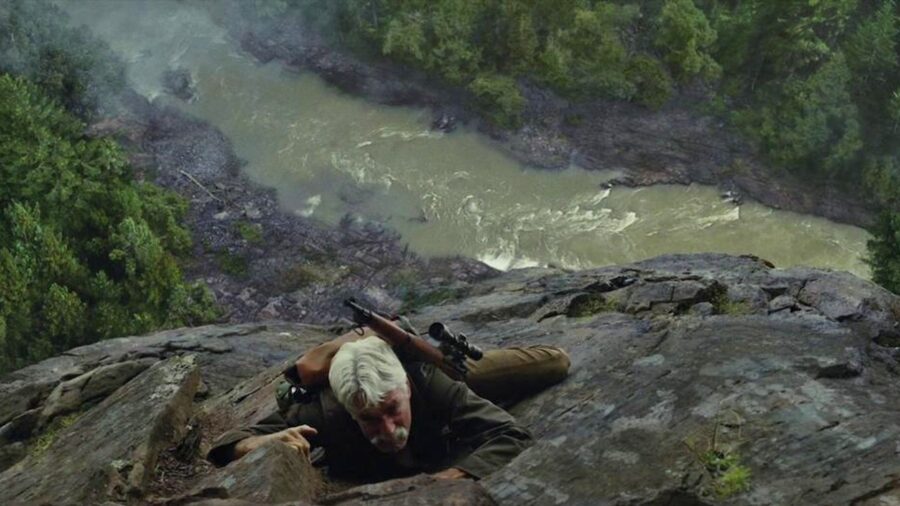Sci-Fi War Drama Brings Together Two Unlikely Villains, Stream Without Netflix Subscription

When you hear a title like The Man Who Killed Hitler and Then the Bigfoot, the last thing that you’d expect is a masterfully crafted drama that will tug at your heartstrings. But that’s exactly what you get with this Sam Elliott-starring sci-fi adventure drama. Using its ridiculous premise as a solid anchor point for an emotional story about aging and regret, The Man Who Killed Hitler and Then the Bigfoot shows that behind every skilled soldier, there is a person desperate to connect with his loved ones.
Sam Elliot Carries The Weight Of The World

The Man Who Killed Hitler and Then the Bigfoot bounces back and forth between two timelines. We’re first introduced to a young Calvin Barr (Aidan Turner) at the tail-end of World War II as he’s about to carry out an assassination plot against Adolf Hitler. In 1987, an older, more subdued Calvin Barr (Sam Elliott) spends his time drinking at a bar by himself and living a solitary life in the company of his dog.
A Life Of Regret

In the 1987 timeline in The Man Who Killed Hitler and Then the Bigfoot, Calvin has a somewhat strained relationship with his brother Ed (Larry Miller). Though they keep in touch on a regular basis, Calvin is soft-spoken and secretive about his past life as a special ops soldier who carried out various classified missions. As Calvin meanders through his retirement, he often has flashbacks involving Maxine (Caitlin FitzGerald), the love of his life whom he could never settle down with.
Solitary Existence

Because of the top-secret nature of Calvin’s past work in The Man Who Killed Hitler and Then the Bigfoot, he was never able to fully commit to his love life or start a family. Calvin also feels like killing Hitler was a futile effort, as his loyal followers are still committed to their hate-filled ideologies without a leader in place. Reflecting on his past, Calvin vows never to kill again because the secret life that he had to live kept him from finding true happiness.
One Last Job

Adhering to the “one last job” trope in the strangest way possible, The Man Who Killed Hitler and Then the Bigfoot brings Calvin out of retirement. Calvin is recruited by government agents who inform him that a Bigfoot is on the loose and carrying an infection that can wipe out humanity as we know it. Though Calvin is reluctant to kill again, he has no choice because the agents inform him that he’s one of the few people who are immune to the infection and skilled enough to efficiently murder the problematic cryptid.
One Of The Best Sasquatchs On Film

The Man Who Killed Hitler and Then the Bigfoot has one of the most brutal action sequences between man and Sasquatch ever depicted on the silver-screen, but it’s not the primary focus of the film, and neither is Hitler. The main focus is on “the man,” who has a heavy soul full of regret and sorrow. Calvin may be a highly respected solider, but he longs for the human connections that he failed to establish throughout his life.
A Commerical Flop But Critical Hit

Due to its ridiculous premise and title, The Man Who Killed Hitler and Then the Bigfoot wasn’t a commercial hit. Those who were willing to give it a chance sang songs of praise, however. Sam Elliott’s portrayal of a man haunted by his past is incredibly grounded, and the film earned a 75 percent critical score on Rotten Tomatoes as a result.
Beneath its veneer of absurdity, The Man Who Killed Hitler and Then the Bigfoot is a deep character study that may surprise you upon its conclusion. If you’re willing to go out on a limb and get emotional when you least expect it, you can watch the assassination plots unfold on Tubi.












